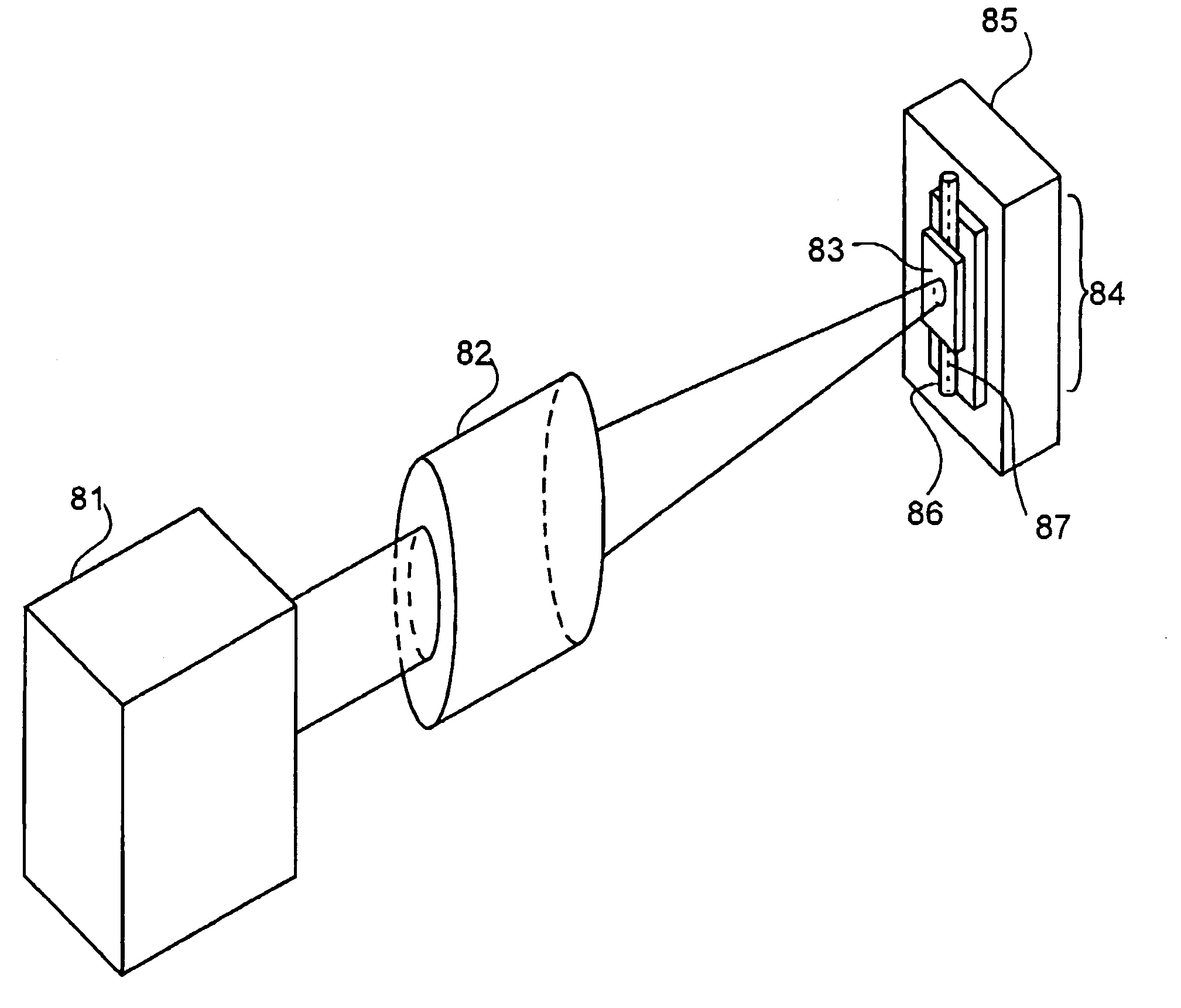Bragg grating and method of producing a Bragg grating using an ultrafast laser
- Summary
- Abstract
- Description
- Claims
- Application Information
AI Technical Summary
Benefits of technology
Problems solved by technology
Method used
Image
Examples
Embodiment Construction
[0060]Referring to FIG. 1, the prior art of Miller et al. is shown. A femtosecond laser pulse 8 is incident on a diffractive element 10. The laser pulse 8 is diffracted and propagates to a curved mirror 12. The laser pulse is reflected and propagates into a lens 16. The laser pulse then propagates from the lens to the target.
[0061]Unfortunately, the technique taught by Miller et al. is very sensitive to the alignment of the various optical components. This technique is an interferometric technique, which incorporates a diffractive optic to split a beam to produce a plurality of beams. The optical path lengths of the diffracted beams should be the same length within a tolerance corresponding to the physical presence of the electromagnetic radiation i.e. approximately 30 μm for 125 femtosecond laser pulses. Although not impossible, it is often difficult to provide such highly accurate path lengths, even with costly equipment. Consequently, when such a technique is used to produce a Br...
PUM
 Login to View More
Login to View More Abstract
Description
Claims
Application Information
 Login to View More
Login to View More - R&D
- Intellectual Property
- Life Sciences
- Materials
- Tech Scout
- Unparalleled Data Quality
- Higher Quality Content
- 60% Fewer Hallucinations
Browse by: Latest US Patents, China's latest patents, Technical Efficacy Thesaurus, Application Domain, Technology Topic, Popular Technical Reports.
© 2025 PatSnap. All rights reserved.Legal|Privacy policy|Modern Slavery Act Transparency Statement|Sitemap|About US| Contact US: help@patsnap.com



